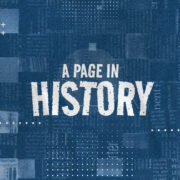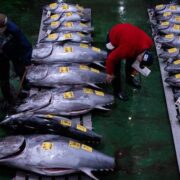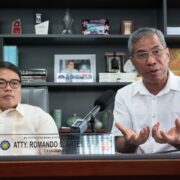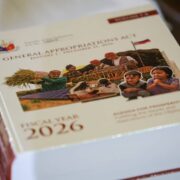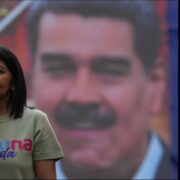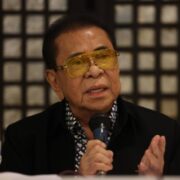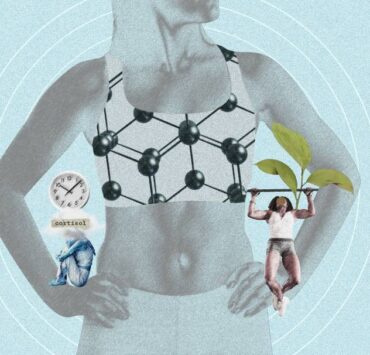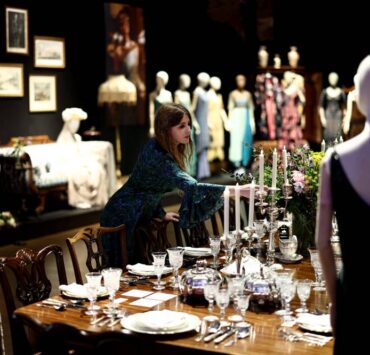Quezon City first art biennial turns city into a living gallery
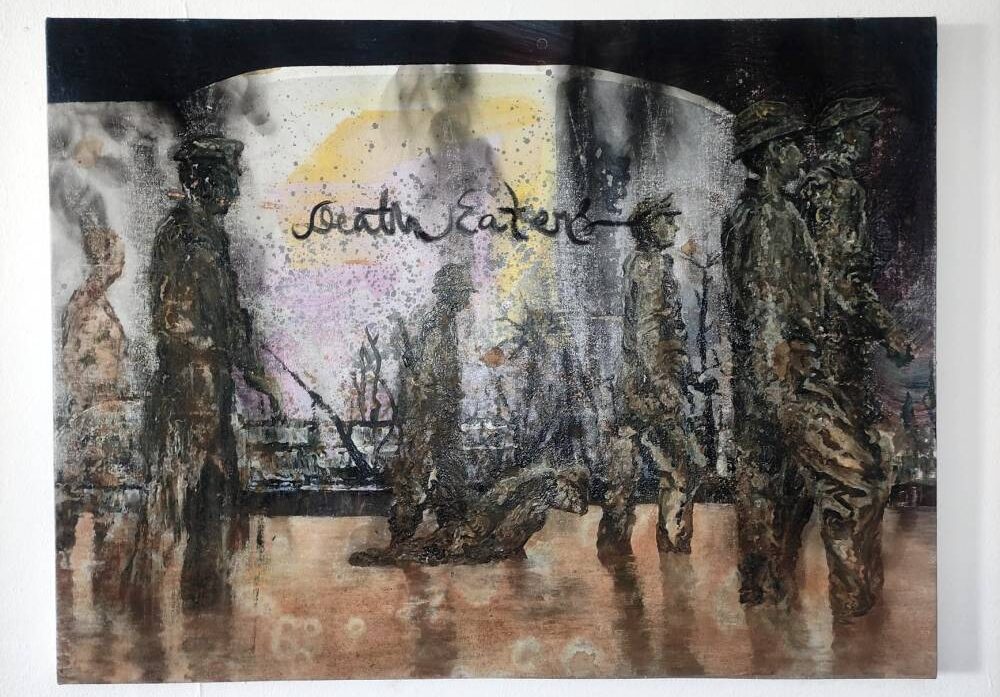
There’s always been something both raw and real about Quezon City.
It’s the kind of place where you can dance with no pretenses at a club in Cubao, stumble upon a smoky jazz bar tucked in Kamias, sip single-origin coffee in Maginhawa, or explore the world through the cuisines around Timog’s churn of new restaurants. And among these are the many galleries in between.
That same restless energy is spilling into the arts for the next three months. And for two months, the Quezon City Biennial is transforming the city into one sprawling, living gallery—layering its streets, abandoned lots, and tucked-away spaces with exhibitions, performances, and experiments on what it means to make and show art, here and now.
Unlike the plush white cubes of established galleries, the Quezon City Biennial is a festival run by artists, for artists. Its first edition, running from Aug. 10 to Oct. 10, gathers more than 30 artists across 10 exhibitions in 20 unconventional spaces. You can check out each artist’s individual practices, complete with drawings by Apol Sta. Maria on their website.
From pop-ups to street interventions, the biennial embraces the grit of the everyday city. Its theme, “Ilalim/Ibabaw” (Below/Above), draws from the EDSA bus route. For many, the commute is a daily current of chaos, flow, and chance encounters. It’s an apt metaphor, as each commute through Quezon City mirrors the passage of people, ideas, and cultures colliding and crossing over.
It only feels right that Quezon City—once the country’s capital and still its biggest, most populous city—is the site of this experiment. A city already buzzing with creative subcultures is now claiming its role as a host for the messy, brilliant, often DIY spirit of contemporary Filipino art.
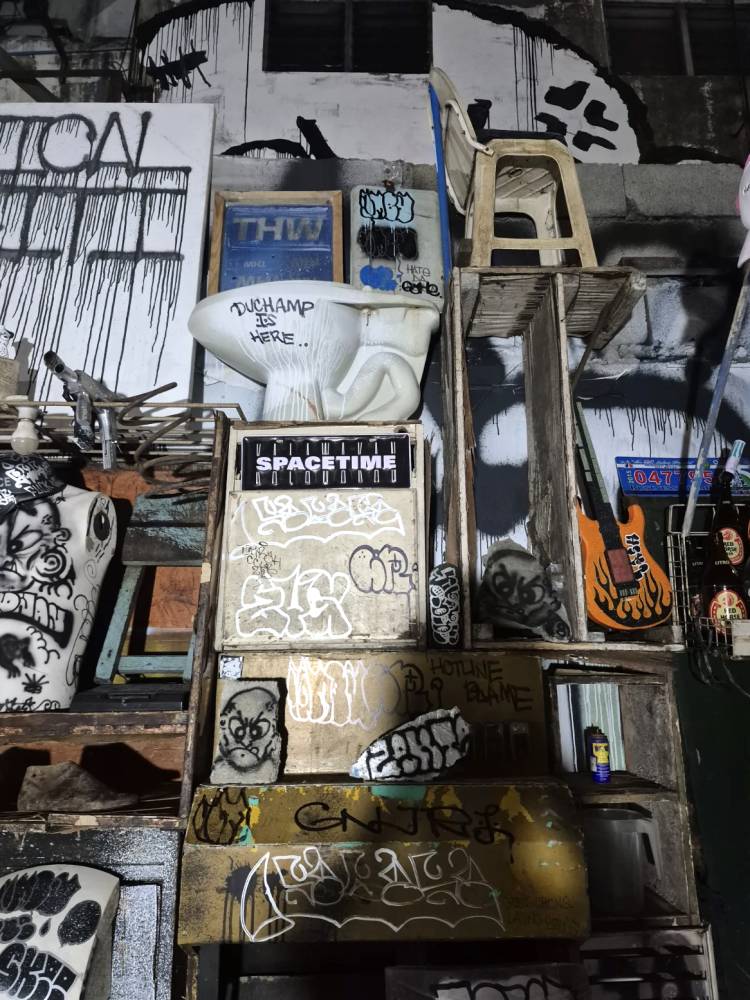
The Quezon City Biennial so far
Efforts toward the biennial actually began before its opening weekend, with a fundraiser last January at Bunso Gallery called “Now/Here,” followed by a string of other fundraisers and pre-events.
The biennial officially opened on Aug. 10 at Kalawakan Spacetime. There, Gino Javier launched his solo exhibition with the sprawling title, “Ang Pumatay Ka Ngunit Ang Uhaw Na Kagubatan Ng Walang Katapusang Pag-itim Ng Tagak, Walang Bango Kastilyong Taga Sa Langis At Bughaw, Ang Nagbabagang Lupa Ng Dagat, Ang Minsan Nagalit Sa Haba Ng Gabi Saang Darating Kang Nakaw Na Tubig, Lumuhod Ka Kapag Pinulot Ka Ibulong Iyong Dangal.” Using old film cameras and printing on alternative surfaces, Javier documents everyday urban life, while probing how images move through systems of reproduction, distribution, and consumption.
On that same day, a group presentation opened: “What Power Leaves No Room For Autonomy? (Reparations for the Land of the Lost)” by Buen Abrigo, Cian Dayrit, and Jose Olarte—artists known for grappling with sociopolitical histories and current issues. Visual artist Lena Cobangbang writes on X, saying it was “fun, very impressive, worthy to be in a museum, and the right amount of chaos. To think this was organized DIY style.” This abandoned lot turned into an “ad hoc exhibit” and gig space that she says takes her back to the days of B-Side.
The show included Dayrit’s embroidered maps with talismanic detail, Abrigo’s soil paintings and installations, and Olarte’s video works. Cobangbang writes that she particularly liked, “the whole set-up… Gino’s floor-to-ceiling tarp… and Olarte’s last line on the text component of his video work: ‘You are a breath that God still remembers.’”
On Aug. 17, Ninuno Gallery hosted “The Elephant”—“a self-reflexive take on the invisible forces that move and influence contemporary art-making in the Philippines”—with works by Zeus Bascon, Decay, Kolown, Rox Lee, Apol Sta. Maria, and tandem Rosie and Joar Songcuya.
Over at Garapata Store, the exhibition “Alaga: Atras-Abante-Biglang-Liko” featured the “antidisciplinary” practice of Alaga, a tattooer, illustrator, painter, performer, and ritual practitioner, who explored the subversive textures of queer Filipino becoming. Alongside him were Mansy Abesamis’ multidisciplinary works, spanning paper-cut installations and hand-built ceramics.
What’s ahead
Coming up is Project 8 Pocket Day on Aug. 23, with a donate-what-you-can lineup of activities: a feminist printmaking “tipar” (an if-you-know-you-know slang word for party) by Rural Women advocates and Tktk Feminist Printmakers. There will also be the grand opening of a kape-kapihan, and a Kusina Film showing of “Tensionada,” a documentary by Alley Santos.
At Sampaguita Projects, the day will roll on with a live music performance and flea market, as well as “Material Support” by Allan Balisi, Uri de Ger, Vladimir Grutas, and David Ryan Viray.
Also on the agenda on Aug. 30: Bahay Toro skate community games and a Green Gate film screening.
One of the Biennial’s most inventive additions is the series of PUV jeepney tours—of private rides turned into mobile venues for artist talks, guided meditation, live performances, and even “jeepjitsu” self-defense lessons (who would’ve thought?).
The jeep route winds through Kalawakan Spacetime, MinusPlus/Garapata Store, Ninuno Gallery, NO Gallery, Green Gate, The O Home, and Sampaguita Projects.
In the weeks ahead, the biennial will keep unfolding with more exhibitions, more takeovers of unexpected spaces, and more collisions between art and everyday city life that blur the lines. The Quezon City Biennial website will also carry updates on what’s coming next—a kind of evolving map of the festival as it grows.
And just like the theme “Ilalim/Ibabaw” suggests, echoing the rhythms of transport, chaos, and chance encounters, this biennial makes the commute itself, and all the little sojourns in between, worth the trip.
The Quezon City Biennial runs from Aug. 10 to Oct. 10. Find full details, schedules, and artist features on quezoncitybiennial.com

